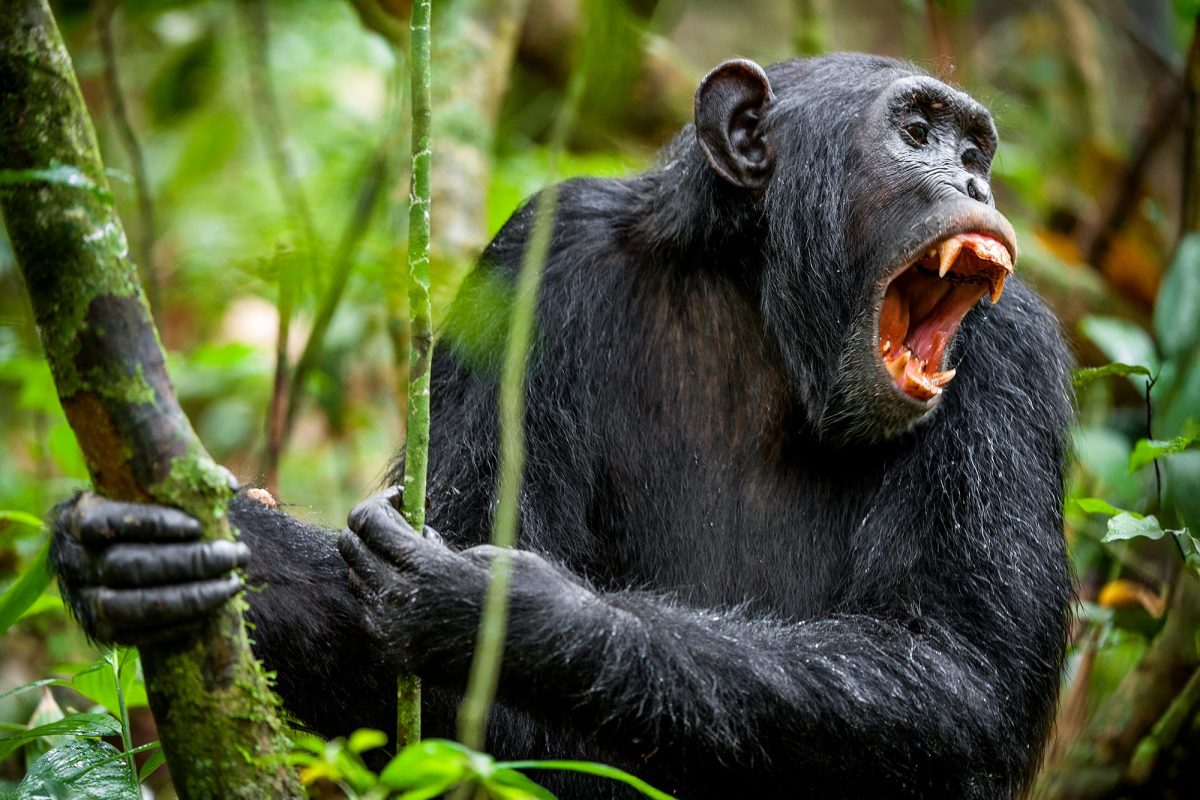Introduction
In a groundbreaking discovery that adds a new layer of depth to our understanding of animal intelligence, researchers have found that chimpanzees use rhythmic drumming as a form of long-distance communication. This intriguing behavior reveals more than just noise-making; it reflects a sophisticated, non-verbal language among our closest primate relatives. As science continues to uncover the secrets of the wild, this study brings us closer to decoding the language of chimpanzees.
What Is Rhythmic Drumming in Chimpanzees?
Rhythmic drumming in chimpanzees involves striking tree buttresses or hollow surfaces with their limbs, often using a specific beat or pattern. These sounds can travel across dense forests, reaching distances of up to a kilometer or more. This phenomenon has been observed in chimpanzee populations in Africa, particularly in the Taï Forest of Côte d’Ivoire.
Unlike random banging, this drumming appears to follow distinct rhythmic sequences. Each chimpanzee has a unique drumming style, almost like a signature, which helps others identify who is “speaking” even from far away.
How Chimpanzees Use Drumming to Communicate
Recent studies, particularly from institutions like the Max Planck Institute for Evolutionary Anthropology, reveal that drumming is not just a display of dominance or excitement, but a strategic communication tool. Here’s how chimpanzees use this skill:
1. Individual Identification
Each chimpanzee has a unique drumming rhythm. Just like a voice print in humans, this rhythm allows others to recognize who is drumming without seeing them. It plays a crucial role in maintaining social bonds and avoiding conflicts.
2. Coordinating Movement
In large forests, visual contact is often limited. Drumming acts like a GPS signal, letting members of the group know where everyone is. This is especially useful during foraging or when navigating complex terrain.
3. Territorial Communication
Chimpanzees may also use drumming to assert territorial boundaries. Loud, rhythmic beats can signal to other groups that an area is already occupied, potentially preventing confrontations.
4. Emotional Expression
Much like humans use music or dance to express emotions, chimpanzees may drum to express excitement, frustration, or social tension.
Why This Discovery Is Important
The use of rhythmic drumming adds to a growing body of evidence that chimpanzees possess advanced cognitive abilities. Here’s why this matters:
Evolution of Language: This behavior might represent an early evolutionary step toward the development of rhythm and language in humans.
Cultural Transmission: The patterns seem to be learned and passed down, suggesting cultural behavior in chimpanzee communities.
Conservation Significance: Understanding how chimpanzees communicate can help in developing better strategies to protect their habitats and ensure they remain connected across fragmented forests.
The Science Behind the Sound
The sounds produced during drumming can travel up to 1 km depending on forest density and weather. This makes drumming an ideal form of communication in dense environments where visual cues are limited. Scientists have used audio recording equipment to map drumming events and analyze their rhythms, durations, and contexts.
In some observations, chimpanzees paused their journey just to listen and respond to a drumming signal—evidence that they understand the meaning behind the beats.
Chimpanzees and the Roots of Human Music
Interestingly, the rhythmic and communicative nature of chimpanzee drumming bears resemblance to early human drumming and musical behavior. Some anthropologists argue that rhythm, beat, and communal sounds may have evolved in early humans for social bonding, much like how chimpanzees use it today.
This finding suggests a shared ancestral trait and positions music not just as a cultural product but as a biological and evolutionary tool.
Real-World Applications and Future Research
As fascinating as this discovery is, it opens up even more questions for researchers and wildlife conservationists:
Can we create a “dictionary” of chimpanzee drumming patterns?
Do female and male chimpanzees use different drumming styles?
How do young chimpanzees learn drumming—through imitation or trial and error?
Future research will aim to use machine learning and acoustic analysis to decode and classify drumming rhythms, possibly enabling humans to better understand and even respond to chimpanzee communication.
Conclusion
The discovery that chimpanzees use rhythmic drumming to communicate across forests is more than just a curious fact—it’s a window into the intelligent, socially complex world of our primate cousins. It reminds us that communication goes far beyond words and that rhythm, beat, and sound have deep evolutionary roots.
As we continue to explore the ways animals communicate, this behavior challenges our assumptions about language and intelligence, urging us to listen—perhaps more closely than ever—to the rhythms of the wild.

















+ There are no comments
Add yours